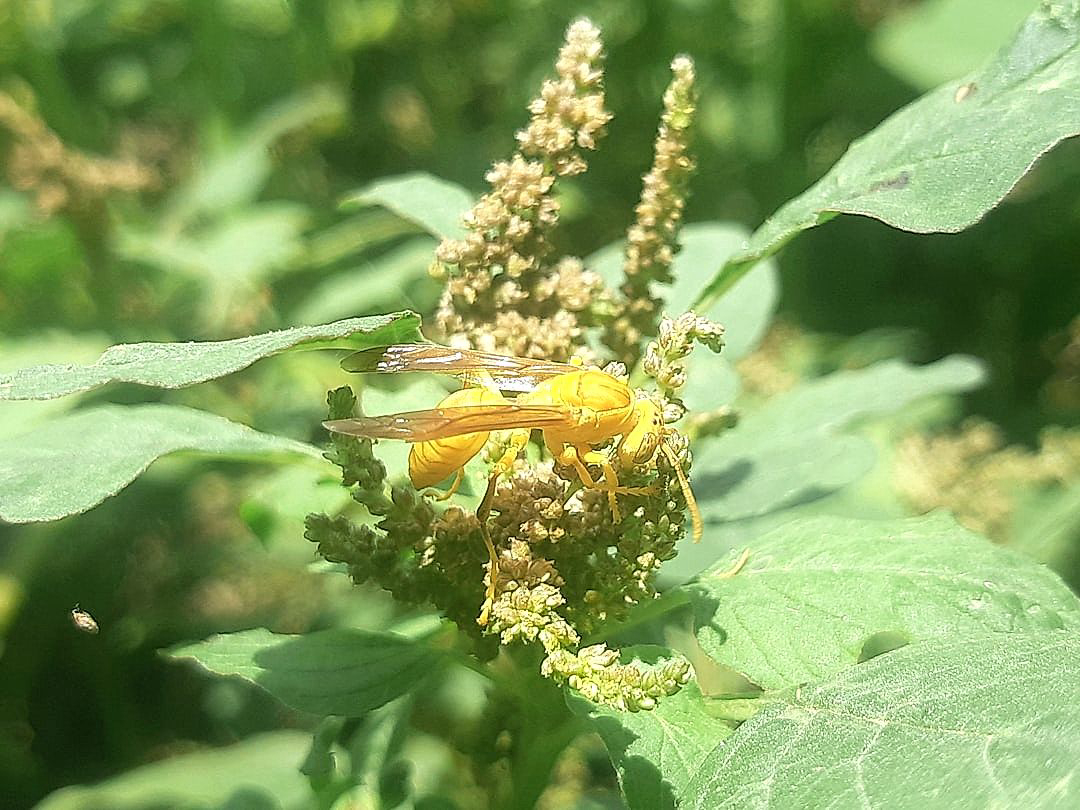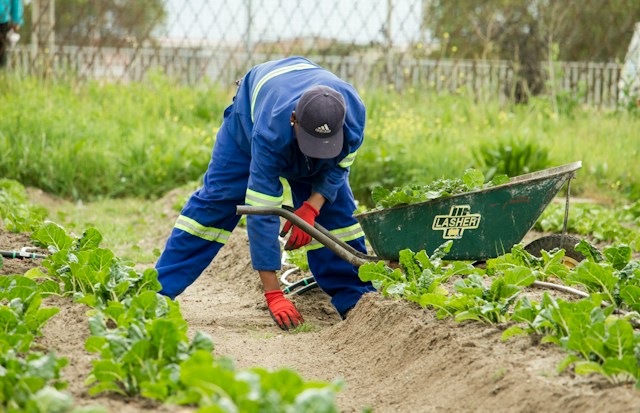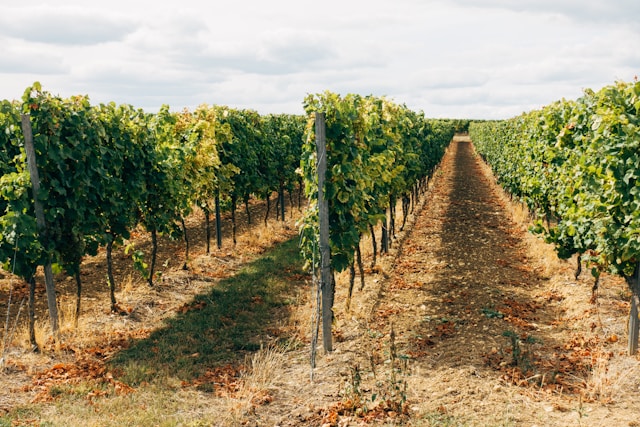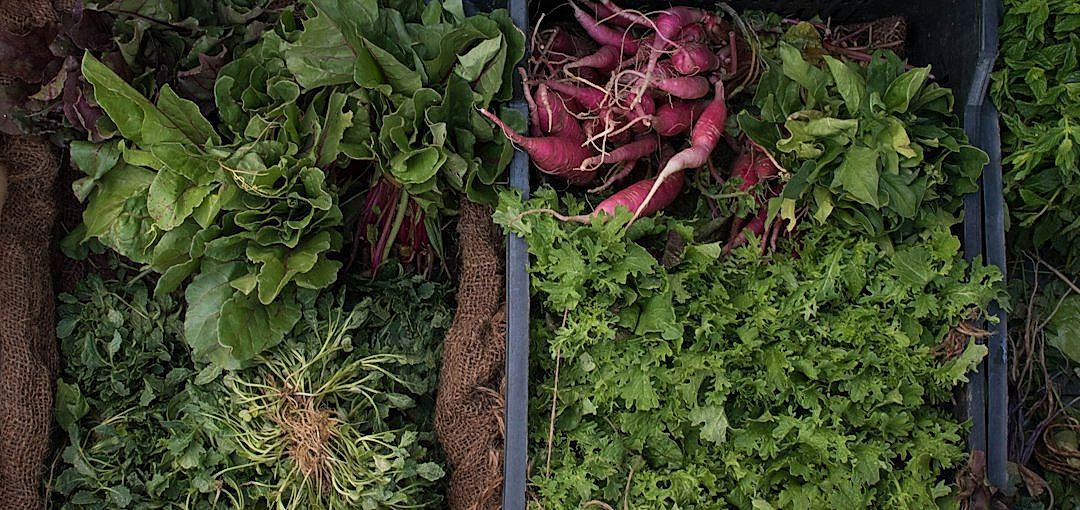Pests can have a significant impact on the health and yield of produce, leading to substantial losses for farmers and disruption in the food supply chain.
Therefore, strategies to effectively manage pests are critical for agricultural sustainability and food security.
Integrated Pest Management (IPM) offers a comprehensive approach to pest control that combines different techniques to reduce the reliance on chemical pesticides.
This method can not only mitigate damage to crops but also conserve biodiversity, improve soil health, and ensure long-term farm productivity.
In this article, we will delve deeper into IPM, its key principles, and various techniques that can be employed in the context of produce farming.
Mindfully implementing these strategies can pave the way for a healthier, more bountiful harvest.
Contents
- Techniques For Integrated Pest Management In Produce
- 1. Regular pest monitoring and identification
- 2. Biological control using predators and parasitoids
- 3. Crop Rotation to Disrupt Pest Life Cycles
- 4. Use of Resistant Crop Varieties
- 5. Judicious use of pesticides when necessary.
- 6. Use of Natural Pest Repellents
- 7. Physical Pest Control (e.g., traps, barriers)
- 8. Proper Sanitation and Waste Disposal
- 9. Timing of planting to avoid pest seasons.
- 10. Public Education and Awareness
- The Bottom Line
Techniques For Integrated Pest Management In Produce
1. Regular pest monitoring and identification
The first step in implementing an effective Integrated Pest Management (IPM) strategy in produce is regular pest monitoring and identification.
This involves meticulous checking of crops, soil, and surrounding areas for any signs of pest infestation.
Pest monitoring is important as it allows farmers or gardeners to take early action before the pest population grows too large.
It’s worth noting that regular monitoring and inspection should not just focus on the crops but also the surrounding environment.
Various methods can be employed for this purpose, such as setting up trap crops, visual inspections, or using pest pheromone traps.
These methods not only highlight the presence of pests, but also give an indication of their population size.
Once a pest is detected, its accurate identification is crucial in determining the best control measure.
Pests vary in types and species, and so do their control methods.
Therefore, correct identification of pests plays an essential role in implementing a suitable and effective pest control strategy.
To accurately identify pests, one may need to use specialized equipment, like magnifying glasses, or seek help from professional entomologists.
Several universities and agriculture extension offices also offer pest identification services, usually free of charge.
Photographs of pests can also be sent to online pest identification resources or mobile applications to get a quick identification.
Apart from visual identification, laboratory diagnosis can also be conducted to identify pests through DNA testing.
Once the pests have been identified, the information serves as a guide in selecting an effective pest management strategy.
Remember, a sound pest management strategy is about managing pests, not eradicating them – regular monitoring and correct identification of pests are keys to achieving this.
It helps in making an informed decision about when it is absolutely necessary to intervene and when it is okay to let nature take its course.
2. Biological control using predators and parasitoids
In the realm of integrated pest management (IPM), one of the key techniques utilized is biological control.
Also known as biocontrol, this method focuses on employing natural enemies of pests, namely predators and parasitoids, to manage their populations.
Predators, as the name suggests, are organisms that consume pests as their primary food source, ultimately reducing the pest’s population.
Examples of these include ladybug beetles, some types of wasps, and spiders which are all known to prey on harmful pests such as aphids, mites, and caterpillars.
The other biological control agents utilized in IPM are parasitoids.
Parasitoids are organisms that spend a significant portion of their life attached to or within a single host organism, ultimately causing the host’s death – a characteristic that makes them effective in pest control.
Common examples of parasitoids include various species of parasitic wasps and flies.
These insects lay their eggs on, or within, the bodies of their host pests, and when their larvae hatch, they consume the host, reducing their population in the process.
Effective use of both predators and parasitoids in biological control involves a deep understanding of the pest’s life cycle, preferred habitat, and natural enemies.
It’s also important to maintain a balance, as an over-reliance on biological control agents can have untoward effects on the wider ecosystem.
Complementing biological control with other IPM techniques such as crop rotation and judicious use of pesticides can help create a more sustainable and effective pest management strategy.
In certain circumstances, biological control agents can be bred in captivity and released in large numbers into the pest-affected area, a method known as augmentative biocontrol.
Moreover, biological control is not just limited to outdoor farming but can also be employed effectively in protected cultivation methods like greenhouse farming.
Despite the challenges and complexities associated with biological control, it offers a promising, eco-friendly, and sustainable approach to integrated pest management.
In the long term, it can drastically reduce reliance on chemical pesticides, thus promoting environmental health, ecological balance, and human safety.
3. Crop Rotation to Disrupt Pest Life Cycles
Implementing crop rotation in the field can serve as a great technique in managing pests in produce.
Though it may seem an old farming practice, crop rotation is the process of systematically planting different crops in the same area across different seasons.
This practice works on the principle that pests are often crop-specific, and by rotating the crops, the life cycle of pests can be disrupted and their populations can be significantly reduced.
Upon the completion of the life cycle of a particular crop, any pest or disease that has targeted it may still persist in the soil or the surrounding environment.
However, when a new type of crop that the pests or diseases are not adapted to infest or infect is introduced, their survival and propagation are hindered.
Rotating crops in this way serves to disrupt the life cycle of pests, lessening their impact on subsequent crop cycles.
This method is especially useful for controlling soil-borne pests, such as nematodes and certain types of fungi.
Moreover, crop rotation enhances soil health and fertility, indirectly boosting crop resistance to pests.
However, it’s crucial that the crops selected for rotation are unrelated, as pests can often infest closely related plants.
Planning the rotation schedule should also take into account the attractiveness of the plant to the pests in different growth stages.
Additionally, the susceptibility of the subsequent crop to pests left behind by the previous crop is also an important consideration while planning.
It is not just about rotating crops, but carefully planning a productive and pest-resistant cycle.
While the implementation of crop rotation as a method alone might not completely eradicate all pests, it significantly contributes to a robust Integrated Pest Management strategy.
It is a proactive measure to control pest populations and ensure healthy, pest-resistant produce.
In an era striving for sustainable agriculture, crop rotation can prove to be an eco-friendly, cost-effective and reliable method for pest management.
4. Use of Resistant Crop Varieties
The technique of using resistant crop varieties contributes significantly to the success of integrated pest management (IPM) in produce.
Resistant crop variants have been genetically improved to naturally repel or withstand the attack of pests and diseases.
These crop varieties are not genetically modified organisms (GMOs), but rather they are the result of conventional breeding practices that enhance their resistance to pests.
Common examples of resistant crops used in IPM include Bt corn and soybeans, which have been bred for resistance against specific pests.
Choosing to plant resistant crop variants is a reliable and sustainable way to manage pests without impacting the surrounding ecosystem adversely.
Importantly, the use of resistant crop varieties not only reduces the dependency on synthetic pesticides but also aids in preserving the biodiversity of beneficial insects.
Selected crop varieties have the capacity to limit the damage caused by pests hence maintaining high yield.
These varieties often have natural defenses such as a tougher skin that is harder for pests to penetrate or mechanisms that produce toxins that are harmful to specific pests.
Resistant crop variants are also cost-effective since they require less input in terms of synthetic pesticides.
Furthermore, these crops are usually more tolerant of environmental stressors, which often go hand in hand with pest attacks.
Crop resistance does not necessarily means that it is immune, however it does mean that these plants can tolerate pest attacks better than other varieties.
For farmers implementing IPM, planting resistant crop variants is a proactive measure that helps prevent pest pressures from becoming problematic.
Developing these varieties requires significant research and breeding efforts, but the rewards in terms of sustainable pest management are significant.
Finally, the use of resistant crop varieties should be combined with other IPM strategies for optimal results.
Although each crop variant has its own host of pests it can resist, no single variety is immune to all pests. Hence, adopting a holistic approach in IPM is crucial.
5. Judicious use of pesticides when necessary.
Within the strategy of Integrated Pest Management (IPM), one principle is the judicious use of pesticides when necessary.
This means that pesticides are used sparingly, only in situations where they are truly needed and will have a significant impact on pest populations.
The judicious use of pesticides also involves selecting the least harmful option that will still effectively control pests.
This often means opting for organic or biological pesticides over synthetic, chemical-based ones whenever possible.
The goal is to minimize the environmental and health impacts of pesticide use, while still effectively managing pest populations on the farm.
Importantly, the judicious use of pesticides also includes carefully timing and targeting applications.
Pesticides should be applied at a time when they are most likely to reach and have an impact on the targeted pests, while minimizing exposure to non-target organisms.
For instance, some pests are most vulnerable at specific stages of their life cycle, or during certain weather or seasonal conditions.
These factors should be taken into consideration when planning and carrying out pesticide applications.
Another key part of judicious pesticide use is careful observation and monitoring.
Farmers must closely watch their crops for signs of pest activity, and only apply pesticides when they see tangible evidence of damage or a threatening level of pest presence.
This strategy reduces the amount of pesticides used, and ensures they are most effectively deployed.
Special attention should also be paid to the conditions and circumstances of the pesticide’s use as well.
Certain components like wind, temperature, and rain can affect how pesticides work and it is crucial to keep them in mind.
In summary, the judicious use of pesticides within an IPM strategy involves careful selection, timing, and application of pesticides, based on careful monitoring and scientific knowledge of pests and their behavior.
In doing so, farmers can protect their crops, while also safeguarding the health of the environment and the people who live and work on or near their farms.
This levelheaded and calculated approach to pesticide use is a critical aspect of effective and sustainable pest management.
6. Use of Natural Pest Repellents
The use of natural pest repellents is a vital technique in Integrated Pest Management (IPM) for produce, aiding in the control of potentially harmful insects and diseases.
This sustainable method maintains the balance of the ecosystem without introducing artificially synthesized chemicals that may have detrimental effects.
Unlike synthetic pesticides, natural repellents are less likely to impact non-target organisms, thus preserving beneficial insects and fauna.
One such natural repellent is neem oil, derived from the seed of the neem tree, which disrupts pest life cycles, inhibits feeding, and reduces insect fertility.
Another effective natural repellent is garlic, which when used as spray, can discourage pest occurrence due to its strong scent and taste.
Some farmers also use companion planting as a natural pest repellent technique, where certain plants are grown together because they repulse pests.
For instance, marigolds emit a substance which deters nematodes, thus they are often grown alongside susceptible crops.
Another plant used as a natural repellent is lemongrass, which contains citronella, a popular mosquito deterrent.
The use of natural pest repellents in IPM is not only good for the environment but also enhances the overall quality and safety of the produce.
As consumers become more conscious of the negative impacts of synthetic pesticides, there is a growing demand for organically grown food that relies on natural pest control methods.
The use of natural repellents also contributes to economic sustainability for farmers, as many can be produced on-farm, reducing the need for expensive synthetic inputs.
However, it’s important to note that the efficacy of natural repellents may vary depending on factors such as pest species, crop type, and local environmental conditions.
Additionally, unlike synthetic pesticides, the impact of natural repellents is often slower and may require repeated application for effective control.
Despite these potential challenges, the use of natural pest repellents remains a valuable strategy in creating an environmentally friendly, sustainable, and healthy agricultural system.
7. Physical Pest Control (e.g., traps, barriers)
The physical control of pests involves a range of different methods, designed to either keep pests out of specific places, such as farms or gardens, or to kill them off once they have made it into these spaces.
These types of control methods are often preferred due to the minimal impact they have on surrounding ecosystems when compared to certain chemical-based strategies for pest management.
For example, traps are a popular form of physical pest control used in produce farming.
There are numerous types of traps available, each designed to attract and capture specific types of pests, whether they be insects, rodents, or other unwanted creatures.
Traps can be as simple as sticky surfaces that pests cannot escape from or as complex as baits that attract the pest with a scent and then trap it inside.
In addition to trapping methods, barriers can be very effective forms of physical pest control.
These are essentially obstacles that pests cannot cross, deterring them from accessing the crops in the first place.
Such barriers could be something like netting that prevents pests such as birds or insects from reaching the crops, or it could be something like a fence or wall that deters larger pests such as rabbits or deer.
Implementing barriers as a form of deterrent plays a critical role in maintaining the overall health and productivity of the farm.
Furthermore, farmers often use devices known as row covers in their fields, which serve as a type of physical barrier.
Produced out of a lightweight material that still allows sunlight to penetrate, row covers shield plants from numerous types of pests while also providing a microclimate favorable for plant growth.
The choice of whether to utilize traps, barriers, row covers or any other physical control depends largely on the specific type of pest being targeted.
Therefore, it is crucial that farmers undertake regular pest monitoring and identification, which is a foundational step in any Integrated Pest Management strategy.
One significant benefit of physical pest control methods is that they are often more sustainable and less detrimental to the environment than chemical controls.
While physical methods may require a higher initial investment than some other forms of pest management, over time they can save farmers money through reduced inputs and crop loss.
Moreover, as the public continues to call for more sustainable farming practices, farmers using physical pest control methods contribute to this effort and can make their produce more appealing to conscious consumers.
8. Proper Sanitation and Waste Disposal
The role of proper sanitation and waste disposal in pest management in produce cannot be overstated.
Sanitation plays a huge role in pest management as it can help to reduce population levels of numerous pests and make the environment less attractive to them.
Improper waste disposal, on the other hand, may attract pests and provide them with the conditions necessary for their survival and proliferation.
Pests are often attracted to areas of filth, where they can feed and breed with relative ease, hence, proper sanitation is needed to eliminate these favourable conditions.
This involves regular cleaning and timely disposal of all kinds of waste to ensure that your environment is not attractive to pests.
Besides, the cleanliness of your tools, storage facilities, and the general farm environment is critical in ensuring that pests do not find a suitable habitat to thrive.
Hence, it is advisable to have a regular cleaning schedule to prevent pest infestation in your produce farm.
Waste disposal is another aspect of sanitation that requires consideration.
Unattended waste can be a breeding place for pests. Thus, making it essential to dispose of all waste materials appropriately, not just to maintain cleanliness but also to prevent a potential outbreak of pests.
While disposing of waste, items that belong to the class of organic waste, such as crop residues, should be disastrously destroyed or disposed off in a manner that does not encourage pest survival and multiplication.
It is also a good practice to compost and recycle organic waste. However, making sure that composting processes are carried out properly to prevent pests from surviving in the compost heap.
Composting the waste and using it as organic fertilizer not only enriches the soil but also eliminates potential pest habitats.
The role of proper sanitation in through pest management also extends to water management.
Poorly managed water sources and systems are potential pest breeding sites; thus, it is integral to regularly check and clean your water systems to prevent pests from breeding.
To wrap up, it is necessary to keep in mind that sanitary practices need to be coupled with other pest management techniques to realize a pest-free environment.
9. Timing of planting to avoid pest seasons.
The concept of timing the planting to avoid pest seasons is a strategic approach in integrated pest management that aims to minimize the exposure of crops to pests.
This technique involves having a thorough understanding of the life cycle and behavior of pests common to particular crops and their peak seasons.
Hence, it’s essential to conduct regular observations and gather data on pest infestation patterns to create a comprehensive crop planting schedule.
By rightly timing the planting, farmers can deter a significant proportion of potential pest attacks on produce.
It’s a proactive measure that deters pests naturally, without resorting to the use of pesticides.
This strategic planting method is cost-effective, with the added benefit of creating a more sustainable and healthier farming environment.
Though this technique requires significant effort in terms of research and planning, it ultimately leads to huge savings in time and resources spent on pest control.
Moreover, this method is proven to improve crop yield and quality by protecting crops from unnecessary pest damage.
Notably, this technique can be combined with other pest control strategies for optimal results.
Overall, the practice of timing planting to avoid pest seasons aligns with the principles of Integrated Pest Management (IPM), which seeks to use balanced, diverse strategies to manage pests.
It’s a testament that effective pest control is not just about reactive measures, but also preventative strategies that can save crops even before pests strike.
Each farming region may have unique pest cycles, and hence it is helpful to reach out to local agricultural extension services or departments to get accurate information.
They can provide the necessary data and guidance to help farmers determine the most appropriate time to plant their crops for maximum yield and minimum pest problems.
Adopting this measure could reduce a farmer’s reliance on chemical pesticides, thereby contributing to sustainable farming practices and protecting the environment in the long run.
After all, prevention is better than cure and taking steps to avoid pest problems in the first place is a prudent approach to ensure healthy, high-quality produce.
To sum up, timing planting to avoid pest seasons is a simple yet effective part of an integrated pest management strategy, offering benefits that go beyond pest control to yield, cost-saving, and sustainability.
10. Public Education and Awareness
The promotion of public education and awareness -in regards to integrated pest management (IPM) practices- is a key aspect in controlling pests and preventing damage to crops.
Primarily, it ensures that all stakeholders, including farmers, consumers, and government bodies, are well informed about the benefits, methodologies, and the importance of practising IPM.
As a tool, education can equip farmers with the skills to identify pests, understand their life cycles and the impact of various control methods.
Being aware of different pests and control methods allows farmers to make informed decisions regarding the most suitable control methods for their farms.
Moreover, increased public awareness can lead to the acceptance and promotion of IPM practices by the larger community, thus encouraging wider use and effectiveness.
Effective education and awareness campaigns could include workshops, webinars, and field demonstrations.
These methodologies provide hands-on experience to farmers, enabling them to grasp the practical aspects of IPM.
Imparting knowledge about the benefits of natural predators, resistance crops, and the judicious use of pesticides can help in reducing the over-reliance on chemical pesticides.
This in return can lead to a reduction in pest resistance, environmental pollution and an improvement in the overall health of the ecosystem.
Furthermore, public awareness can play a role in shaping regulatory policies in life, promotion, and enforcement of IPM practices.
The more people understand the benefits and need for sustainable farming, the higher the chances of the government implementing supportive IPM policies.
Consumer awareness is crucial in driving demand for produce grown through sustainable pest management practices.
By choosing to buy from farmers who employ IPM, they indirectly encourage more farmers to adopt these environmentally friendly farming techniques.
While the focus is often on farmers, it is equally critical to educate pest management professionals on the latest advancements of IPM.
This professional education allows for continual development and implementation of IPM protocols into everyday practices.
It’s clear that sustaining ongoing public education and awareness regarding the benefits and techniques of integrated pest management is a fundamental piece of the puzzle in managing pests effectively and sustainably.
The Bottom Line
Throughout, the importance of adopting diverse and sustainable pest management strategies has been deeply emphasized.
The practice of regular monitoring, biological control methods, and tactical crop rotation have been touted as key preventative measures.
Furthermore, the cultivation of resistant crop varieties, the disciplined use of pesticides, and the incorporation of natural repellents could be crucial in controlling infestations.
Physical intervention and proper hygiene maintenance also act as significant deterrents.
Timely planting to sidestep pest activity, coupled with raising public awareness on these practices, is paramount.
Collectively, these strategies could significantly mitigate pest-related issues while promoting environmentally-friendly practices for the future of agriculture.




